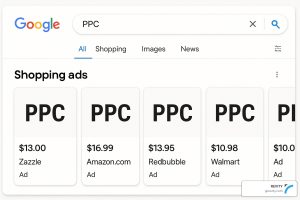E-commerce platforms have transformed the way people buy and sell products. What began as a niche digital space has become a global marketplace filled with opportunity. Today, businesses of every size use online platforms to reach new audiences, increase sales, and grow their brand beyond geographic limits.
At the heart of this evolution are e-commerce platforms. These tools do more than support transactions. They shape how customers experience a brand, interact with products, and complete purchases.
A well-designed platform creates a smooth, reliable journey from homepage to checkout, while a poor experience often causes cart abandonment and lost revenue.
Several major players dominate the e-commerce space. WooCommerce appeals to businesses already on WordPress. BigCommerce offers enterprise-level capabilities. Magento supports extensive customization for developers. Yet among these options, one platform consistently rises to the top: Shopify.
Shopify stands out as one of the most powerful, scalable, and user-friendly e-commerce platforms available today. Whether you run a small boutique or a high-volume enterprise, Shopify provides the tools and flexibility you need to build, manage, and grow a successful online store.
Why choosing the right e-commerce platform matters
Selecting the right e-commerce platform lays the foundation for your online store’s success. It affects everything from the way customers interact with your site to how easily your team manages daily operations. A platform should not only support your current needs but also prepare your business for future growth.
User experience plays a critical role in conversion rates and customer satisfaction. A slow, confusing, or cluttered website drives visitors away and reduces trust. A well-structured platform helps you create a seamless shopping journey that encourages engagement and repeat purchases.
On the backend, strong platform functionality simplifies inventory tracking, order fulfillment, and product updates, allowing your team to focus on growth instead of troubleshooting.
Scalability matters as much as day-to-day usability. As your business grows, your platform should grow with it. Look for a solution that handles increased traffic, higher order volumes, and expanded product lines without slowing down or requiring complex workarounds.
A good platform also integrates easily with third-party apps and services, so you can add marketing tools, payment gateways, or shipping options without rebuilding your entire system.
Customization and ease of use are also essential. You need to shape your online store to reflect your brand, offer personalized experiences, and adapt to changing trends. A flexible platform gives you the freedom to make updates quickly and maintain consistency across devices.
Choosing the wrong platform limits your growth, frustrates your customers, and drains resources. Choosing the right one sets your business up for long-term success with fewer obstacles and more opportunities to scale, innovate, and thrive in a competitive e-commerce landscape.
What makes Shopify a standout platform
Shopify has earned its reputation as a leading e-commerce platform by offering tools that empower business owners to launch, manage, and grow their online stores with confidence. Its strength lies in its simplicity, reliability, and flexibility — all designed to support a smooth, scalable e-commerce experience.
One of Shopify’s most appealing features is its user-friendly interface. You do not need a background in web development to create a professional-looking store. The dashboard is intuitive, allowing you to add products, customize your storefront, and track orders with ease.
Most tasks require only a few clicks, making the platform accessible to beginners and efficient for seasoned sellers.
Shopify also handles hosting and security for you. It includes SSL certificates to protect customer data and complies with PCI standards for safe online transactions. You never have to worry about site maintenance or downtime. Shopify’s infrastructure ensures that your store runs smoothly, even during traffic spikes or major sales events.
Its extensive app ecosystem takes functionality to the next level. With thousands of apps available, you enhance your store’s capabilities without writing code. Whether you need tools for email marketing, inventory management, customer reviews, or upselling, Shopify’s app store offers countless options that integrate seamlessly into your workflow.
Shopify’s mobile optimization also deserves recognition. Every theme is mobile-responsive, and the platform ensures fast load times across all devices. This matters more than ever as a growing number of consumers shop primarily from their phones. A mobile-friendly store improves conversions, boosts engagement, and keeps customers coming back.
Round-the-clock support adds another layer of value. Shopify offers 24/7 assistance through live chat, email, and phone, so help is always available when you need it. Whether you’re troubleshooting a technical issue or asking about a new feature, the support team responds quickly with practical solutions.
Customization is easy with Shopify’s professionally designed themes. Each theme adapts to mobile and desktop formats and gives you the flexibility to change colors, layouts, and branding elements to match your unique vision. With Shopify, your online store looks polished, runs smoothly, and grows with your business.
Benefits of launching a Shopify store
![]()
Launching a Shopify store gives your business a strong head start in the e-commerce space. With its all-in-one platform, Shopify removes many of the barriers that typically slow down online store development and makes it easy to build, launch, and manage a high-performing site.
Start selling fast
One of the biggest advantages is how quickly you can get your store up and running. Shopify’s setup process is straightforward and requires no advanced technical skills. You can choose a theme, upload products, and configure your payment settings in a few hours. This fast time to market helps you start selling sooner and test your strategy in real time.
Shopify also includes built-in SEO features that help your store rank higher in search engine results. From customizable meta titles and descriptions to clean URLs and mobile-optimized design, Shopify gives your products a better chance of being discovered by organic traffic.
You can also connect your store to tools like Google Search Console and leverage SEO apps for advanced optimization.
Make checkout a breeze
To support a seamless checkout experience, Shopify accepts a wide variety of payment gateways. Use Shopify Payments, PayPal, Stripe, and many others, making it easier to serve customers across different regions and preferences. This flexibility increases your chances of conversion and keeps the buying process smooth and secure.
Tools to make your job easier
Managing inventory and orders becomes much easier with Shopify’s integrated tools. From a centralized dashboard, you can track stock levels, manage fulfillment, and process returns. These features reduce the risk of overselling, help you stay organized, and improve the customer experience from purchase to delivery.
Shopify also supports multichannel selling by integrating with top marketplaces like Amazon and eBay, as well as social media platforms such as Facebook, Instagram, and TikTok. This expands your reach and gives you more ways to connect with customers where they already shop.
Finally, Shopify equips you with powerful marketing and analytics tools. Launch email campaigns, run retargeting ads, and track performance through real-time reports. These insights help you fine-tune your strategy, increase customer engagement, and drive more sales over time.
Launching a Shopify store gives you access to a complete ecosystem built for growth. It saves time, improves visibility, and empowers you to scale your business with confidence.
Shopify for small businesses vs. large enterprises
Shopify provides a flexible solution that supports businesses at every stage of growth. Whether you’re launching your first product or managing a high-volume enterprise, the platform offers scalable tools and pricing plans that align with your needs and resources.
Shopify’s pricing structure caters to a wide range of business sizes. The Basic plan is ideal for solopreneurs and small shops looking to establish an online presence without overwhelming complexity. The Shopify and Advanced plans offer additional features like professional reports, lower transaction fees, and enhanced shipping discounts.
For large-scale operations, Shopify Plus delivers an enterprise-level solution with advanced automation, custom integrations, and dedicated support.
Small businesses often choose Shopify for its simplicity, speed, and affordability. A local boutique, handmade goods store, or startup brand can launch quickly, access powerful tools, and grow steadily without needing a full tech team. The platform supports product listings, customer communication, inventory tracking, and marketing from a single dashboard.
For larger businesses, Shopify Plus provides the infrastructure to handle thousands of transactions, complex logistics, and multi-channel campaigns. Features like bulk processing, advanced APIs, and customizable checkout experiences allow these businesses to maintain control and performance at scale.
Brands like Gymshark, Allbirds, and Kylie Cosmetics have built thriving global storefronts using Shopify’s enterprise tools.
Shopify adapts to your goals and grows with your business. Whether you’re managing a one-person operation or leading a large team, Shopify gives you the flexibility, reliability, and support needed to succeed in the competitive e-commerce landscape.
Common misconceptions about Shopify
Despite its popularity, several misconceptions surround Shopify that may cause business owners to overlook its full potential. These myths often come from outdated comparisons or a lack of familiarity with what the platform truly offers. Let’s break down some of the most common misunderstandings and set the record straight.
It’s meant for small businesses starting out
Some believe Shopify is only for beginners. While it’s true that Shopify makes it easy for first-time sellers to get started, the platform supports businesses at every level.
From small startups to global brands, Shopify delivers advanced features, robust infrastructure, and scalable tools that handle high-volume operations with ease. The simplicity of the interface means efficient management without technical hurdles.
It can’t be personalized
Another common myth is that Shopify lacks flexibility. In reality, Shopify offers a wide range of customization options. With access to thousands of apps, advanced theme editing tools, and a developer-friendly ecosystem, businesses can shape their stores to fit specific needs and branding.
Shopify Plus users also benefit from custom checkout options, API integrations, and automation tools that give them full control over their store’s functionality.
It costs too much
Some critics argue that Shopify is too expensive compared to open-source platforms. While open-source solutions may appear cheaper upfront, they often require ongoing development, hosting, security updates, and plugin management — costs that add up quickly.
Shopify’s all-in-one pricing includes secure hosting, automatic updates, customer support, and access to built-in features that reduce the need for outside tools or developers. When you factor in time saved, reduced maintenance, and business continuity, Shopify often delivers greater value over time.
By understanding what Shopify truly offers, business owners can make informed decisions that support growth, simplify operations, and improve the customer experience. Dismissing Shopify based on outdated myths means missing out on a platform that continues to evolve, innovate, and lead the future of e-commerce.
When Shopify may not be the best fit
While Shopify works well for most businesses, it may not suit every situation. Certain brands have unique requirements that go beyond what a hosted e-commerce platform can offer. In these cases, choosing a more specialized or self-managed solution may deliver better results.
Businesses with highly custom workflows or niche functionality might find Shopify limiting. For example, companies that rely on complex product configurations, proprietary checkout systems, or highly tailored user experiences may prefer platforms that offer unrestricted code access and deeper customization from the ground up.
Although Shopify provides extensive app integrations and developer tools, some use cases demand full control over every element of the store’s infrastructure.
Companies that operate within self-hosted environments or maintain large, custom-built ecosystems may also lean away from Shopify. These businesses often have in-house development teams and existing architecture that aligns better with open-source platforms like Magento or WooCommerce.
If your business depends on specific server settings, database structures, or a unique tech stack, moving to a hosted platform may introduce unwanted limitations.
In these scenarios, Shopify might not offer the flexibility or control your team expects. However, for most online sellers — including fast-growing startups and established retailers — Shopify provides a balanced mix of ease, power, and scalability.
Understanding your business’s technical needs, growth goals, and internal resources will help you choose the platform that supports long-term success.
Make the most of your Shopify store with Revity Marketing

Building and optimizing a Shopify store requires a clear strategy, strong branding, and targeted marketing. That’s where Revity Marketing Agency comes in.
Revity specializes in helping businesses unlock Shopify’s full potential. From custom store design and development to conversion-focused SEO and paid ads, our team knows how to turn your online presence into a revenue-driving machine. If you’re ready to build, scale, or revamp your Shopify store, trust Revity to guide the way.
Contact Revity today and take the next step toward e-commerce success.
































